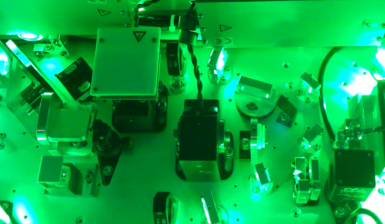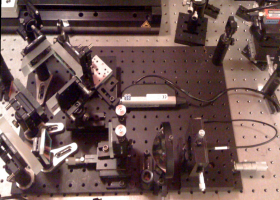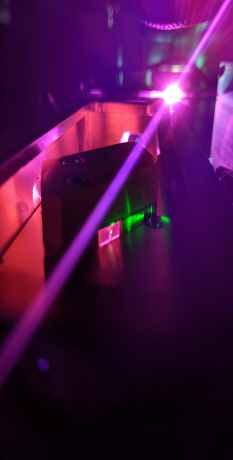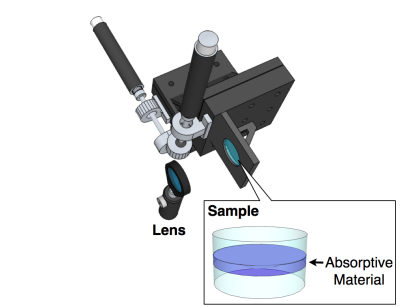
Our research deals with photoacoustics, a discipline where lasers are used to produce ultrasonics waves in a medium. Usually, the laser beam is focused onto the sample that partially absorb the light. The transient heating of the sample produces transient mechanical stresses that lead to ultrasonic transduction.
Since the discovery of ultrafast lasers, the generated photoacoustic waves have reached ultrafast time scales, in the picosecond regime, with corresponding frequencies in the THz range. Right now, lasers can be used to efficiently excite sound waves at any given frequency up to THz . In the THz frequency range, the ultrasonic wavelength is on the order of a couple of nanometers making them suitable for probing nano-objects. The photoacoustic technique perfectly fits the needs for non-contact, non-invavise, non-destructive mechanical probing of samples.
Depending on the laser peak energy, the acoustic pressure can be tuned. With extremely powerful lasers the acoustic pressure can reach TPa. In this case, the intense acoustic wave becomes a shock wave. The experiments are carried out on a single shot basis since the shock wave irrevocably damages the sample.
About

Using intense laser pulses to generate strong shock waves is a well-known technique for compressing fuel pellets in laser fusion and strengthening critical metallic components such as turbine blades in jet engines. Unfortunately, however, visual observation of this process is not straightforward.
Scientists from the USA and France have now developed an ultrafast imaging technique that allows direct real-time observation of the generation, propagation and focusing of laser-driven shock waves in water.
Single-shot acquisitions collected by a camera revealed that such shock waves can reach supersonic speeds of Mach 6 (~9 km s–1), which corresponds to a pressure of around 30 GPa at the shock focus.
The researchers used an axicon conical prism and a lens to focus laser pulses of several millijoules (800 nm in wavelength and 300 ps in duration) to a 10-μm-wide,
200-μm-diameter ring in a 5-μm-thick water solution containing a 2 wt% suspension of carbon nanoparticles.
The incident light vaporized the nanoparticles and hence generated a shock wave. The researchers sent weak probe light pulses through the sample for collection at a CCD camera, which made it possible to record either two- dimensional spatial images, streak images using one axis of the detector as time, or interferometric images using a set of reference pulses. Features such as the shock focus and cavitation were clearly observable in the streak images.
The researchers say that they will now study shock waves in solid samples, as well as chemical and structural transformations at the shock focus.
O. Graydon
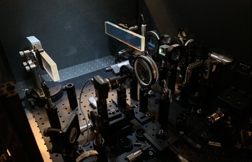
>>Menu
CNRS
Thomas Pezeril

